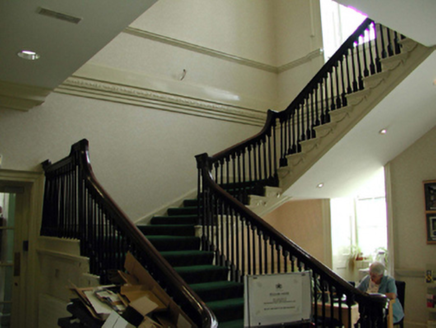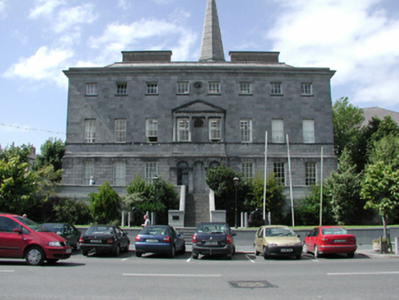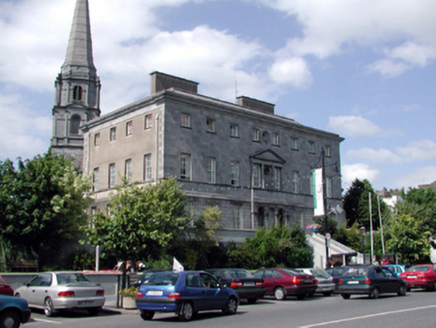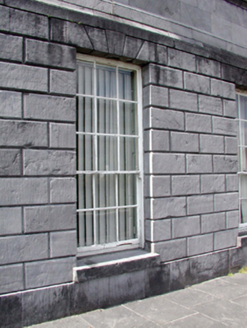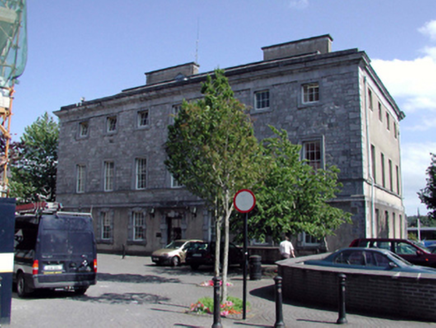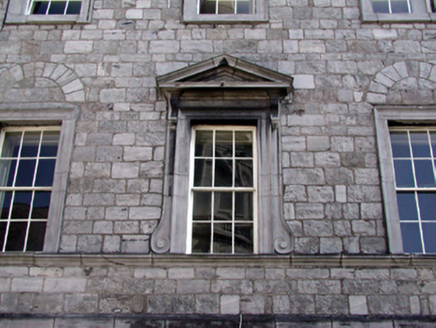Survey Data
Reg No
22504094
Rating
National
Categories of Special Interest
Architectural, Artistic, Historical, Social
Original Use
Bishop's palace
Historical Use
School
In Use As
Office
Date
1740 - 1755
Coordinates
260986, 112310
Date Recorded
10/07/2003
Date Updated
--/--/--
Description
Detached nine-bay three-storey over raised base Classical-style Bishop’s palace, built 1741 - 1752, on a symmetrical plan retaining some original fenestration with four-bay three-storey side elevations to north-east and to south-west, and seven-bay three-storey rear elevation to north-west. Subsequently in use as school. Renovated, c.2000. Now in use as Waterford City Council offices. Hipped slate roofs on a quadrangular plan behind parapet with clay ridge tiles, rendered chimney stacks on axis with ridge, and cast-iron rainwater goods. Limestone ashlar walls to front (south-east) and to rear (north-west) elevation with rusticated blocks to ground floor having stringcourse over, pedimented tetrastyle Doric frontispiece to first floor on rusticated advanced ‘arcaded’ base, medallion to centre top floor, and moulded cornice over having blocking course to parapet. Unpainted rendered, ruled and lined walls to remainder. Square-headed window openings with cut-limestone sills, Gibbsian surrounds to ground floor rear (north-west) elevation, and moulded surrounds over having pediment over to centre first floor. 3/3, 6/6 and 6/9 timber sash windows with some replacement models, c.2000. Round-headed door openings to front (south-east) elevation with replacement timber panelled doors, c.2000, and fanlights. Square-headed door opening to rear (north-west) elevation with cut-limestone Gibbsian surround having entablature over, and replacement glazed timber door, c.2000. Interior with stairhall having carved timber staircase with decorative plasterwork to walls, and timber panelled shutters to window openings. Set back from road in own grounds on an elevated site with terrace to front having limestone ashlar retaining and parapet walls with flight of seventeen cut-stone steps to lower level.
Appraisal
An imposing Classical-style building commissioned by Bishop Miles (d. 1740) and subsequently by Bishop Charles Este (n. d.), and believed to have been initiated to plans prepared by Richard Castle (c.1690 - 1751), and completed to the designs prepared by John Roberts (1712 – 1796). The building is of great importance for its original intended use as a bishop’s palace, and for its subsequent use as a school. The construction of the building in limestone ashlar reveals high quality stone masonry, and this is particularly evident in the carved detailing, which has retained its intricacy. Well-maintained, the building presents an early aspect while replacement fittings have been installed in keeping with the original integrity of the design. The interior also incorporates important early or original schemes, including decorative plasterwork of artistic merit. Set on an elevated site, the building forms an attractive and commanding feature fronting on to The Mall (to south-east) and on to Cathedral Square (to north-west).
